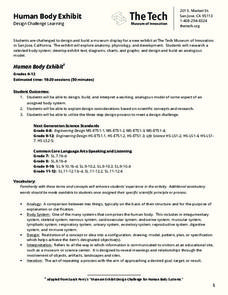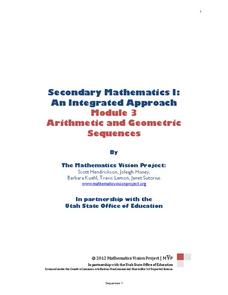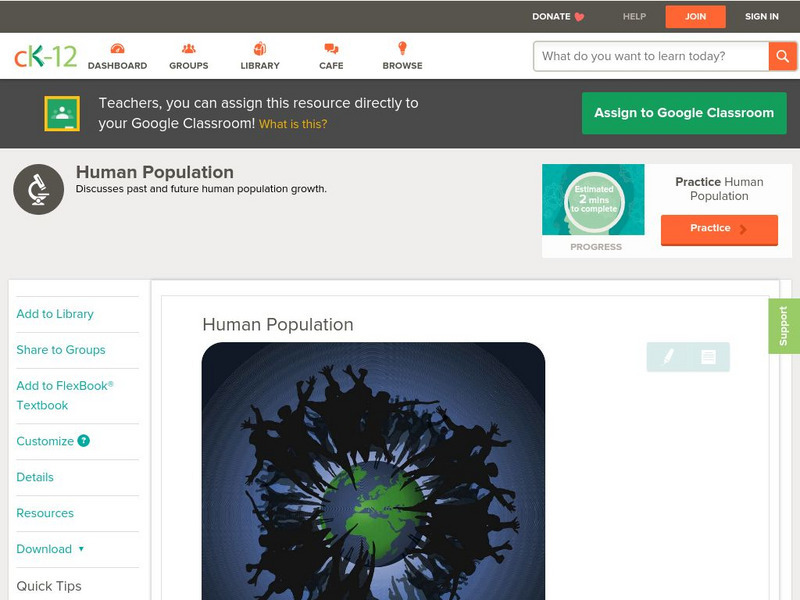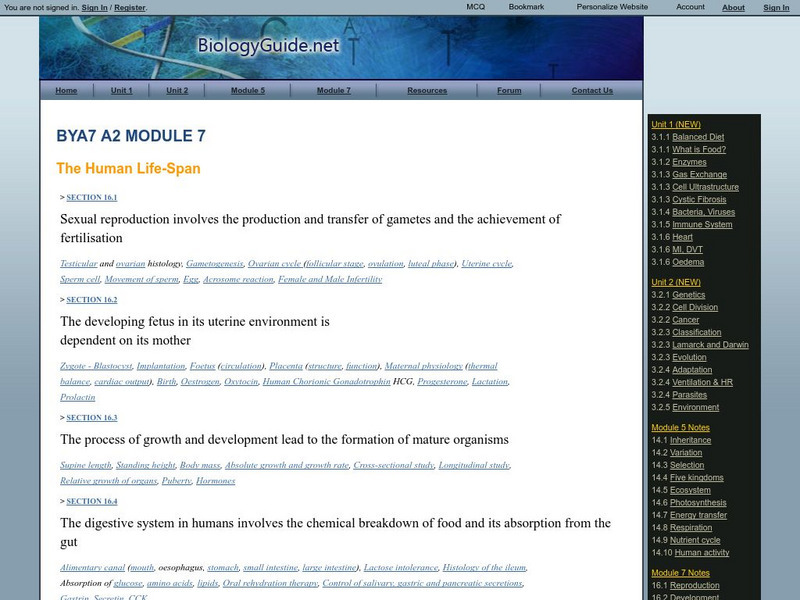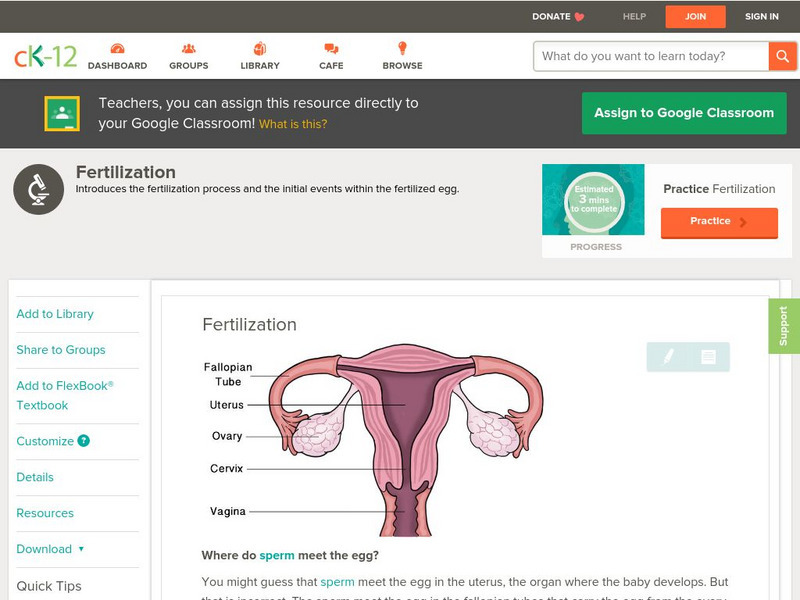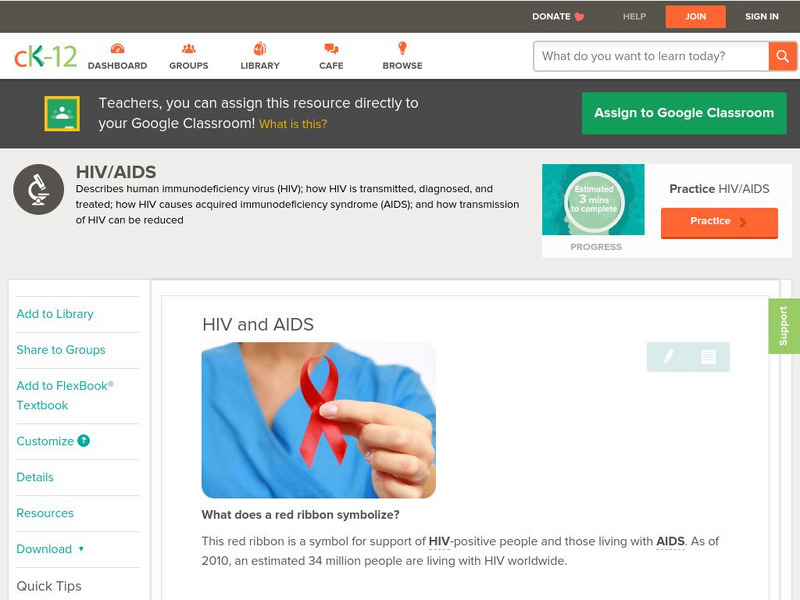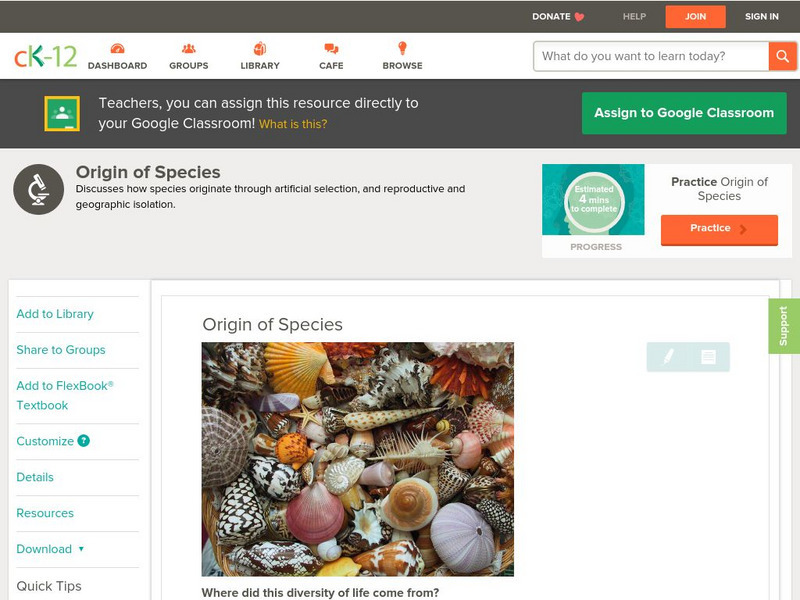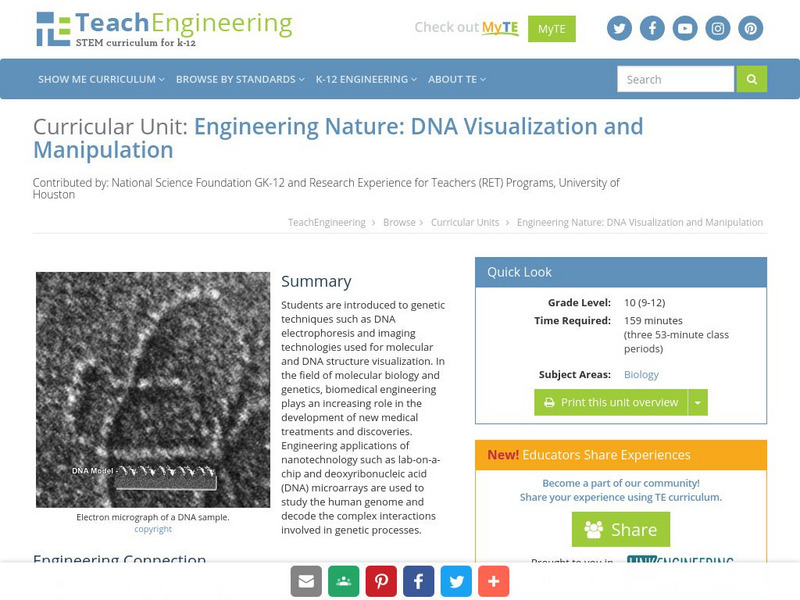Tech Museum of Innovation
Human Body Exhibit
Explore human anatomy and physiology using models. Scholars study systems of the human body and design a display for a museum exhibit. To complete the activity, individuals create analogous models of their chosen human body systems.
Mathematics Vision Project
Module 3: Arithmetic and Geometric Sequences
Natural human interest in patterns and algebraic study of function notation are linked in this introductory unit on the properties of sequences. Once presented with a pattern or situation, the class works through how to justify...
Curated OER
The Science of Psychology
Students explain the differences between psychology, pseudoscience and popular opinion. In groups, they describe, compare and contrast the various biological and cognitive perspectives in the field. Using the internet, they describe the...
Anthropological Association
Race: Teacher Guide: Race
How has the concept of race changed over time? Explore the genetic, cultural, and social aspects of race through a series of impactful activities. Scholars discover how race is influenced by inherited traits, examine census records to...
CK-12 Foundation
Ck 12: Biology: Fetus Growth and Development
[Free Registration/Login may be required to access all resource tools.] Covers major events in the growth and development of the fetus.
CK-12 Foundation
Ck 12: Biology: Development From Birth to Adulthood
[Free Registration/Login may be required to access all resource tools.] Covers milestones in growth and development from birth to adulthood.
CK-12 Foundation
Ck 12: Life Science: Human Population
[Free Registration/Login may be required to access all resource tools.] How quickly is the human population growing? If we look at worldwide human population growth from 10,000 BCE through to today, our growth looks like exponential...
CK-12 Foundation
Ck 12: Life Science: Human Egg Cells
[Free Registration/Login may be required to access all resource tools.] When a baby girl is born, her ovaries contain all of the eggs they will ever produce. But these eggs are not fully developed. They develop only after she starts...
CK-12 Foundation
Ck 12: Life Science: Infancy and Childhood
[Free Registration/Login may be required to access all resource tools.] The first year after birth is called infancy. Infancy is a period when the baby grows very fast. During infancy, the baby doubles in length and triples in weight....
Other
Biology Guide: Human Life Span
Students learn about the human life-span. Some topics investigated in the tutorial are reproduction, nervous system, skeletal muscle, and homeostasis.
CK-12 Foundation
Ck 12: Life Science: Fertilization
[Free Registration/Login may be required to access all resource tools.] The sperm and egg don't look anything like a human baby. After they come together, they will develop into a human being. How does a single cell become a complex...
CK-12 Foundation
Ck 12: Life Science: Hiv and Aids
[Free Registration/Login may be required to access all resource tools.] HIV, or human immunodeficiency virus, causes AIDS. AIDS stands for "acquired immune deficiency syndrome." It is a condition that causes death and does not have a...
National Institutes of Health
National Library of Medicine: What's Happening to Your Body?
This lesson plan site focuses on the changes that adolescents go through and delves into their nutritional, physical, and mental health needs.
CK-12 Foundation
Ck 12: Life Science: Origin of Species
[Free Registration/Login may be required to access all resource tools.] The creation of a new species is called speciation. Most new species develop naturally. But humans have also artificially created new breeds and species for...
TeachEngineering
Teach Engineering: Engineering Nature: Dna Visualization and Manipulation
Students are introduced to genetic techniques such as DNA electrophoresis and imaging technologies used for molecular and DNA structure visualization. In the field of molecular biology and genetics, biomedical engineering plays an...
